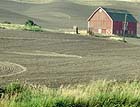Estates branch out
A significant proportion of estates' income now comes from commercial assets, according to new research


Commercial assets are up as much as 25% on estates surveyed for Savills' latest rural research bulletin, and are now contributing as much as 16% of the average estate's gross income. While incomes rose, expenditure rose by less than 1%, significantly less than inflation, proving that past spend on upkeep and repairs is paying off, while the capital growth of agricultural land also boosted total returns from let property. The research also shows that the priorities of many privately owned estates are retention of the core estate twinned with income generation, which comes from rental yields, and diversifying land use and skills. Looking ahead, commercial income should continue to grow, and finding ways of helping the environment through land use, or carbon offsetting has lots of potential, the report stresses. Woodlands, for instance, currently make most estates a loss, but taking advantage of carbon sequestration opportunities could turn this around. 'Over the past decade the drive has been to maximise the income generation opportunities from residential and commercial assets,' says the report. 'However, to continue sustaining the upward trend in gross incomes, estate owners and their managers will need to explore new opportunities on the estate. We believe that the opportunities will lie in increasing leisure and environmental activity. 'Other areas which may offer new income streams include woodland and sporting, minerals, waste disposal and alternative agricultural cropping,' it concludes.
Exquisite houses, the beauty of Nature, and how to get the most from your life, straight to your inbox.
